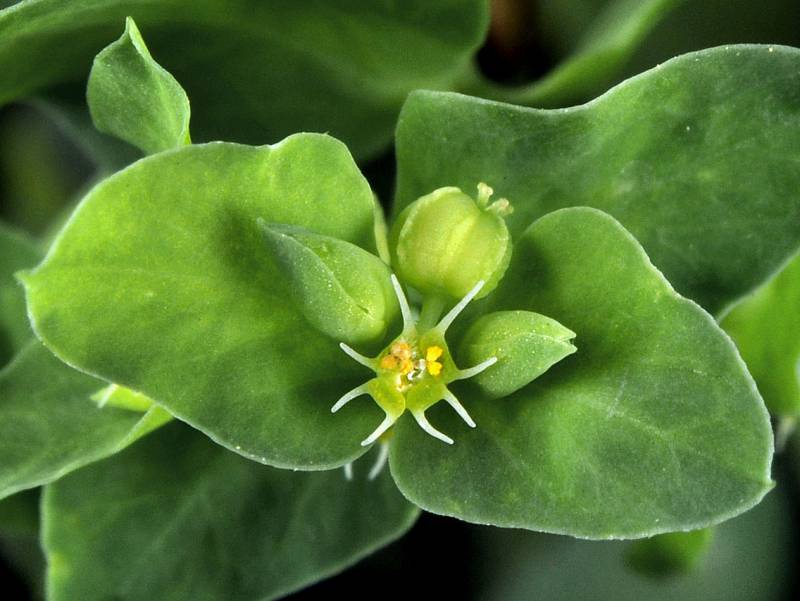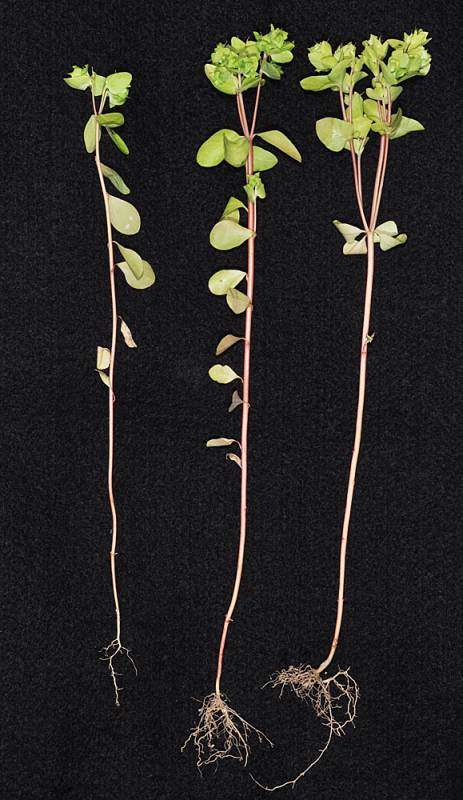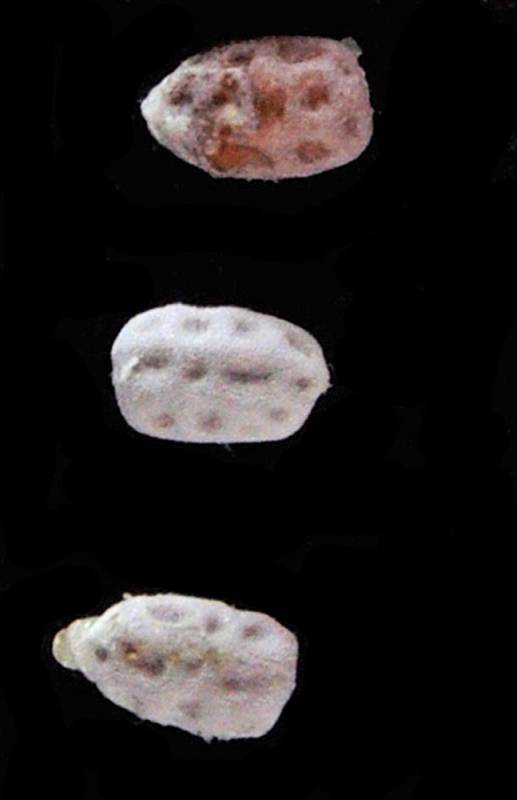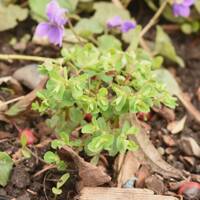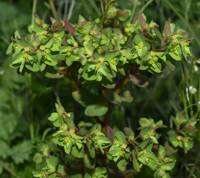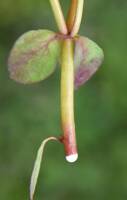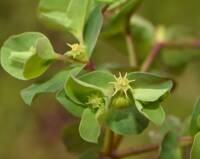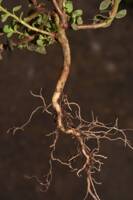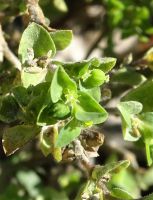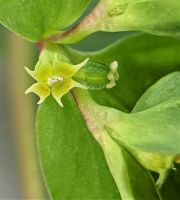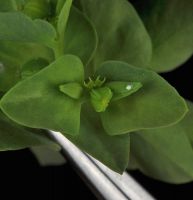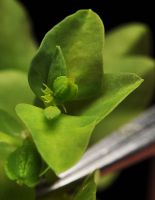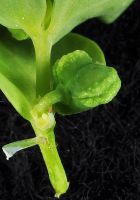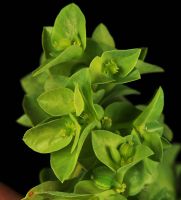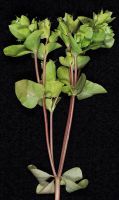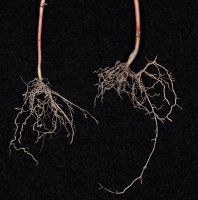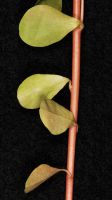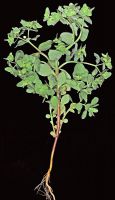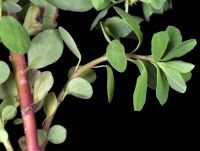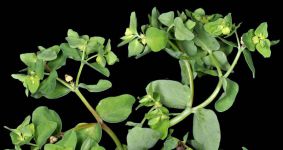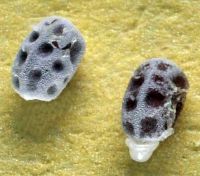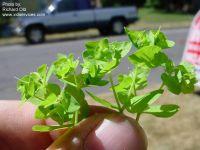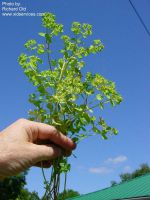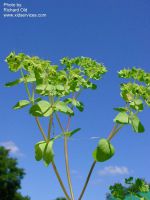Distribution: Occurring chiefly west of the Cascades crest in Washington; British Columbia to California, east across most of North America to the Atlantic Coast.
Habitat: Weed of disturbed ground.
Flowers: May-November
Origin: Introduced from Europe
Growth Duration: Annual
Conservation Status: Not of concern
Pollination: Bees, wasps
Glabrous annual, the stem erect, freely branched, 1-3 dm. tall.
Lower leaves alternate, 1-3 cm. long, rhombic-ovate to rhombic-obovate, narrowed abruptly to very slender petioles 3-10 mm. long; floral leaves opposite, short-petiolate, broadly ovate, 10-25 mm. long.
Inflorescence of cymes terminal on the branches; flowers tiny, monoecious, borne in involucres; staminate flowers numerous, naked, each consisting of a single stamen; pistillate flower single and terminal in the involucre; involucres 1-1.5 mm. long, bearing 4 glands with long, slender horns.
Capsule smooth, 2.5 mm. long, separating into three 1-seeded segments.
Publication: Sp. Pl. 1: 456. 1753.
PNW Herbaria: Specimen records of Euphorbia peplus in the Consortium of Pacific Northwest Herbaria database
WA Flora Checklist: Euphorbia peplus checklist entry
OregonFlora: Euphorbia peplus information
E-Flora BC: Euphorbia peplus atlas page
CalPhotos: Euphorbia peplus photos

